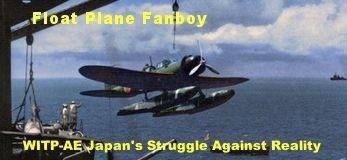operating
Posts: 3158
Joined: 1/19/2013
Status: offline

|
quote:
Nova Scotia portal
History of Canada portal
The Halifax Explosion occurred near Halifax, Nova Scotia, Canada, on the morning of Thursday, December 6, 1917. SS Mont-Blanc, a French cargo ship fully laden with wartime explosives, collided with the Norwegian vessel SS Imo[2] in the Narrows, a strait connecting the upper Halifax Harbour to Bedford Basin. Approximately twenty minutes later, a fire on board the French ship ignited her explosive cargo, causing a cataclysmic explosion that devastated the Richmond District of Halifax. Approximately 2,000 people were killed by debris, fires, and collapsed buildings, and it is estimated that nearly 9,000 others were injured.[3] The blast was the largest man-made explosion prior to the development of nuclear weapons[4] with an equivalent force of roughly 2.9 kilotons of TNT.[5] In a meeting of the Royal Society of Canada in May 1918, Dalhousie University's Professor Howard L. Bronson estimated the blast at some 2400 metric tons of high explosive.[6]
Mont-Blanc was under orders from the French government to carry her highly explosive cargo overseas to Bordeaux, France. At roughly 8:45 am, she collided at slow speed (one to one and a half mph) with the 'in-ballast' (without cargo) Imo, chartered by the Commission for Relief in Belgium to pick up a cargo of relief supplies in New York. The resultant fire aboard the French ship quickly grew out of control. Without adequate and accessible firefighting equipment, the captain, pilot, officers and men were forced to abandon her within a few minutes following the accident. Approximately 20 minutes later (at 9:04:35 am), Mont-Blanc exploded with tremendous force [7] Nearly all structures within a half-mile (800 m) radius, including the entire community of Richmond, were completely obliterated. A pressure wave of air snapped trees, bent iron rails, demolished buildings, grounded vessels, and carried fragments of the Mont-Blanc for kilometres. Hardly a window in the city proper survived the concussion. Across the harbour, in Dartmouth, there was also widespread damage.[3] A tsunami created by the blast wiped out the physical community of Mi’kmaw First Nations people that had lived in the Tuft's Cove area for generations. There were a number of casualties including five children who drowned when the tsunami came ashore at Nevin's Cove.[8]
When I first recalled this explosion, I thought it was a British HMS ship, even more compelling, it turns out to be a French bound ship, full of munitions.
|
 Printable Version
Printable Version












 New Messages
New Messages No New Messages
No New Messages Hot Topic w/ New Messages
Hot Topic w/ New Messages Hot Topic w/o New Messages
Hot Topic w/o New Messages Locked w/ New Messages
Locked w/ New Messages Locked w/o New Messages
Locked w/o New Messages Post New Thread
Post New Thread